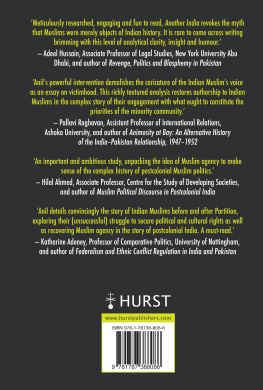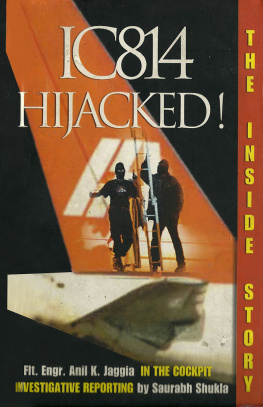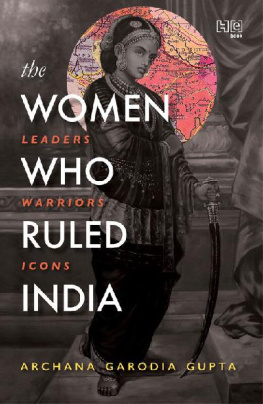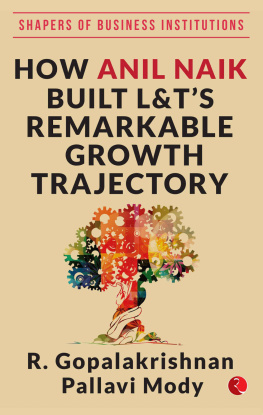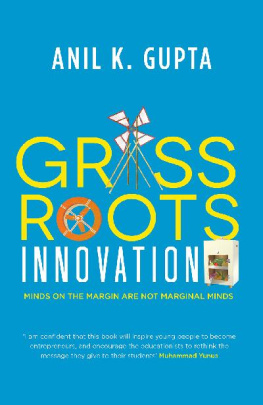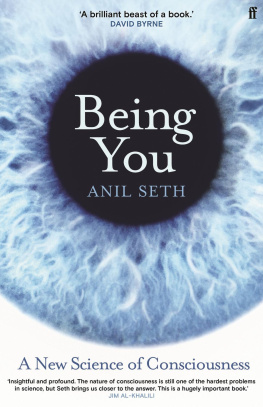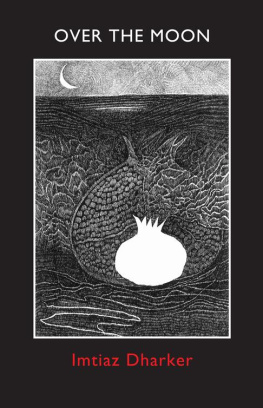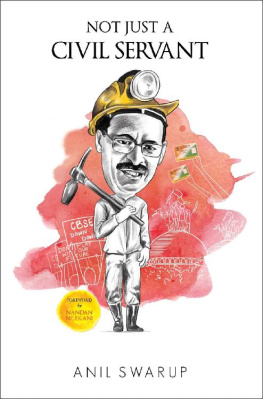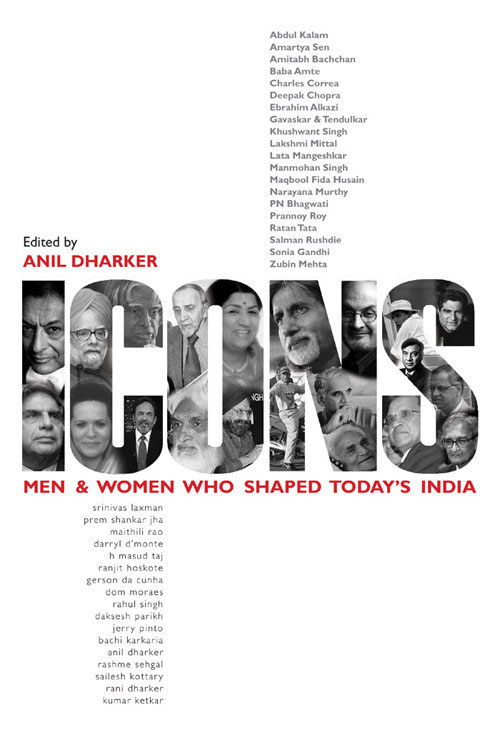I C O N S
OTHER LOTUS TITLES:
| Anil Dharker | Romance of Salt |
| Aitzaz Ahsan | The Indus Saga: The Making of Pakistan |
| Alam Srinivas | Storms in the Sea Wind: Ambani vs Ambani |
| Amir Mir | The True Face of Jehadis: Inside Pakistans Terror Networks |
| Ashok Mitra | The Starkness of It |
| Bhawana Somayya | Hema Malini: The Authorised Biography |
| Dr Humayun Khan and G. Parthasarathy | Diplomatic Divide |
| H.L.O. Garrett | The Trial of Bahadurshah Zafar |
| M.J. Akbar | India: The Siege Within |
| M.J. Akbar | Kashmir: Behind the Vale |
| M.J. Akbar | Nehru: The Making of India |
| M.J. Akbar | Riot after Riot |
| M.J. Akbar | The Shade of Swords |
| M.J. Akbar | Byline |
| M.J. Akbar | Blood Brothers: A Family Saga |
| Maj. Gen. Ian Cardozo | Param Vir: Our Heroes in Battle |
| Maj.Gen. Ian Cardozo | The Sinking of INS Khukri: What Happened in 1971 |
| Meghnad Desai | Nehrus Hero Dilip Kumar: In the Life of India |
| Manoj Namburu | Moguls of Real Estate |
| Meghnad Desai and Aitzaz Ahsan | Divided by Democracy |
| Mushirul Hasan | India Partitioned. 2 Vols |
| Mushirul Hasan | John Company to the Republic |
| Mushirul Hasan | Knowledge, Power and Politics |
| Nayantara Sahgal (ed.) | Before Freedom: Nehrus Letters to His Sister |
| Psyche Abraham | From Kippers to Karimeen |
| Rohan Gunaratna | Inside Al Qaeda |
| Sharmishta Gooptu and Boria Majumdar (eds) | Revisiting 1857: Myth, Memory, History |
| Shashi Joshi | The Last Durbar |
| Shrabani Basu | Spy Princess: The Life of Noor Inayat Khan |
| Thomas Weber | Gandhi, Gandhism and the Gandhians |
| V. Srinivasan | New Age Management: Philosophy from Ancient Indian Wisdom |
| Verghese Kurien, as told to Gouri Salvi | I Too Had a Dream |
| Vir Sanghvi | Men of Steel: Indian Business Leaders in Candid Conversation |
FORTHCOMING TITLES:
| Ajit Bhattacharjea | Sheikh Abdullah: A Biography |
| A. Salam Qureishi | An Indian in Silicon Valley |
| Adi B. Hakim, Rustam B.Bumgara & Lal Bapasola | With Cyclists Around the World |
I C O N S
MEN & WOMEN WHO SHAPED TODAYS INDIA
EDITED BY
ANIL DHARKER
Lotus Collection
Anil Dharker, 2008: Introduction, and signed essays
Authors for individual signed essays
All rights reserved. No part of this publication may be reproduced or transmitted, in any form or by any means, without the prior permission of the publisher.
First published in 2008
The Lotus Collection
An imprint of
Roli Books Pvt. Ltd.
M-75, G.K. II Market, New Delhi 110 048
Phones: ++91 (011) 2921 2271, 2921 2782
2921 0886, Fax: ++91 (011) 2921 7185
E-mail: roli@vsnl.com
Website: rolibooks.com
Also at
Varanasi, Bangalore, Kolkata, Jaipur & Mumbai
Cover design: Supriya Saran
Layout design: Narendra Shahi
ISBN: 978-81-7436-612-2
Rs. 295/
Typeset in Centaur MT by Roli Books Pvt. Ltd. and
printed at Anubha Printers, Noida.
~
These are wonderful men and women, Ayesha.
But theres always room for more.
~
CONTENTS
Srinivas Laxman
Prem Shankar Jha
Maithili Rao
Darryl DMonte
H Masud Taj
Ranjit Hoskote
Gerson da Cunha
Dom Moraes
Rahul Singh
Daksesh Parikh
Jerry Pinto
Prem Shankar Jha
Ranjit Hoskote
Bachi Karkaria
Anil Dharker
Rashme Sehgal
Sailesh Kottary
Rani Dharker
Kumar Ketkar
Anil Dharker
ACKNOWLEDGEMENTS
Iwould like to express my gratitude to Sir Peter Wakefield, Chairman of Asia House, London and Rashmi Poddar, friend and art historian, for ideas we discussed years ago which finally led to this book. Goolam Vahanvati, Solicitor General of India and Sheryar Ookerjee, erudite music critic, for their inputs for my essays on Justice Bhagwati and Zubin Mehta, respectively. The office of Justice Bhagwati also helped with useful material. The contributors to this book, some of who were exemplary in sticking to deadlines, others who taught me the virtues of patience, for their illuminating essays. Pramod Kapoor, Publisher of Roli Books for his cheerful forbearance.
INTRODUCTION
The objective of this book is to present analyses and profiles of some of the figures who are playing an important role in the life of the nation as it completes sixty years of independence, and through them get a sense of where the country is heading.
The first criterion in deciding who would be included in these pages was that they should be living when the book was written. That explains the absence of Mahatma Gandhi, Jawaharlal Nehru, Indira Gandhi and many others.
The second criterion was to choose different aspects of Indias life politics, art, economics, industry, cinema, information technology and so on, and take a representative figure from each field, a figure whose influence is widely recognized as substantial. In writing about his or her work, some idea of what was happening in that field could also be conveyed to the reader.
Sixty years is but a tiny moment in the life of a nation. Yet its been an eventful six decades, a veritable roller coaster ride. In 1947, there was a confidence in the future which even the trauma of Partition and its terrible aftermath failed to shake. Obviously, this had something to do with the optimism of a new beginning, but more than that, there was the certainty that the long (and peaceful) struggle for freedom had forged a united nation, one which had submerged its linguistic, cultural and religious differences in working for Independence and that the bonding that had been achieved would be permanent.
India was also carried forward by the vision of Mahatma Gandhi and Jawaharlal Nehru. Although vastly different in their background and upbringing, they shared the ideal of a nation where all citizens, irrespective of caste and creed, would be equal in every way. The thrust of Nehrus economic policy, whatever we may think of it in retrospect, was also founded on the idealistic hope that socialism would bring about a more egalitarian society. Nehrus formulation of non-alignment, and his leadership of the non-aligned movement, gave the new nation a heady place in world affairs.
And then, suddenly, things started to unravel. Chinas invasion in 1962 made non-alignment seem hollow; the economy, stifled by ever increasing bureaucratic controls, began to die a slow death. Even secularism, made acceptable to most people by the sheer force of Nehrus personality, began to wither away once he and Indira Gandhi had gone. As if this werent bad enough, when the Congress partys domination of politics ended, it wasnt replaced by a strong two-party system but by a coalition of parties, most of them regional, all wielding far more clout than their numbers justified, simply because they held the balance of power. Taking all this into account, anyone who had thought that the 1975 Emergency was the nadir of Indian democracy, was in for a shock : the depths were still to be plumbed.

